The market for digital planning tools is evolving at break-neck speed, driven by hybrid work, distributed teams, and rising user expectations. Some seek a powerful system to replace an overcrowded Trello board, while others need a minimalist app that keeps Todoist’s simplicity but adds automation. Whether you manage personal errands or dozens of client projects, the right task manager saves time, removes chaos, and frees your team to focus on results. Below, we look at why even satisfied Todoist users start exploring alternatives, which criteria matter most, and — crucially — compare ten top solutions for 2025, highlighting why Worksection stands out from the crowd.
Why Do Users Look for Alternatives to Todoist?
Todoist remains one of the world’s most popular planners, yet by 2025 it shows several weak spots that teams and solo specialists increasingly mention.
- Project growth. When you need more than a simple list — full project management with roles, dependencies, and billable hours — Todoist quickly hits its ceiling.
- Limited access rights. Corporate scenarios demand fine-grained control over who sees budgets and internal discussions. Todoist offers only basic privacy levels.
- Integration costs. Expanding features through third-party services (Gantt charts, Kanban boards, time tracking) often costs more than the Todoist subscription itself and complicates the IT landscape.
- Automation and reporting. Users complain about modest built-in reports, a lack of time tracking, and the need to pay for external bots to create simple rules.
- Team limits. The free plan caps the number of projects, and paid plans restrict workspace participants, making scale-up expensive.
Criteria for Choosing a Project- and Team-Management System
Before migrating to a new platform, assess how well it covers your real-world needs.
- Scalability. Can the service handle both personal to-dos and large team projects so you won’t have to switch again next year?
- View options. Lists, Kanban boards, Gantt charts, calendars — each helps users with distinct planning styles work comfortably.
- Time tracker and reports. Built-in time tracking and configurable dashboards save money on add-ons and finance tools.
- Security and rights. Fine-grained access models, two-factor authentication, reliable data centres, and GDPR compliance are vital for any industry.
- Total cost of ownership. The fewer paid “extensions,” the clearer the budget. Ideally, key functions come in every plan.
- Ease of adoption. Native English interface, intuitive navigation, learning materials, and fast support accelerate onboarding.
- Integrations. Google Workspace, Microsoft 365, Slack, Zoom, Zapier, webhooks, or in-house bots reduce friction between departments.
The Best Todoist Alternatives in 2025
Worksection
Worksection is a Ukrainian SaaS platform that has helped teams keep projects under control since 2008. The developers preserved Todoist’s simplicity while expanding the feature set to full Project Management System level:- Universal views. Each task simultaneously lives in a list, on a Kanban board, in the calendar, and on a Gantt chart. Switch with one click without losing data.
- Built-in time tracker. Team members log hours directly in the task, and reports are generated automatically — ideal for agencies, IT outsourcing, and legal firms.
- Granular access. Decide exactly what clients and contractors will see: specific projects, hidden comments, or budget lines.
- No hidden upsells. Every feature — from checklists to API — is available across all plans. You pay only for active users, scaling without pain.
- Fast start. Import from Trello, Todoist, and Asana takes minutes. Mobile apps for iOS and Android support offline mode.
- Support. A friendly team answers live-chat questions in roughly seven minutes — rare even among global leaders.
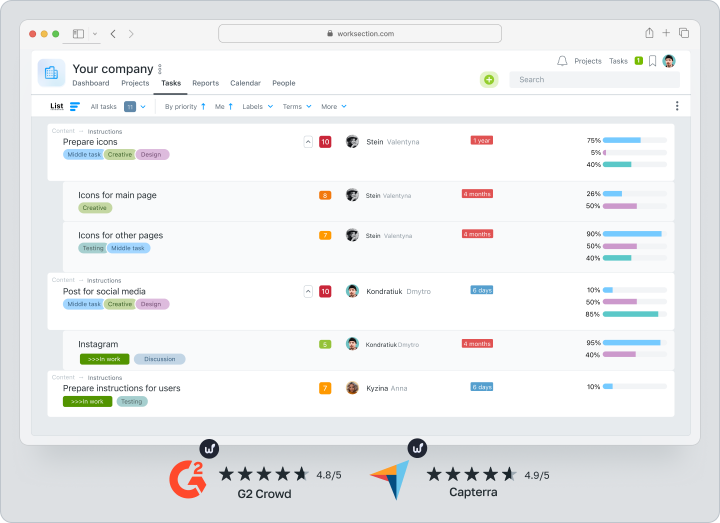
ClickUp
ClickUp is famous for its modularity: you toggle features on or off, turning the service from a simple to-do list into an ERP-level powerhouse. It includes docs, mind maps, OKRs, and automations, yet the learning curve and busy interface often scare off users accustomed to Todoist’s minimalism.
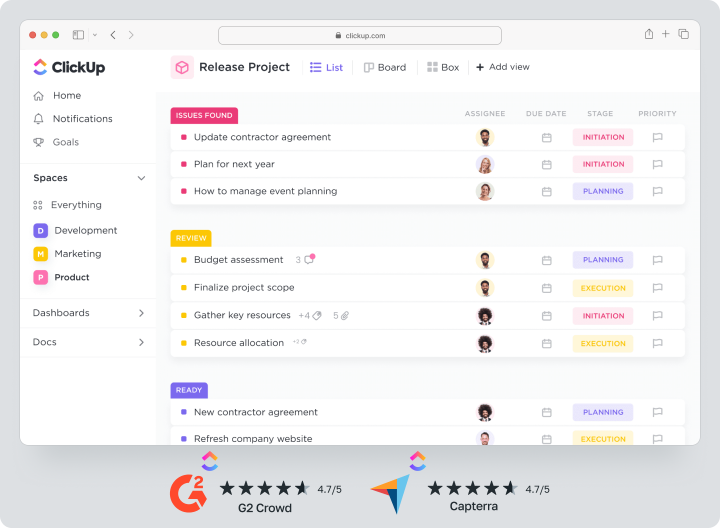
Asana
Asana focuses on managing workflows. The “Goals” section ties tasks to key results, and automation rules cut manual steps. However, advanced features require a Business plan, and there is still no native time tracker.
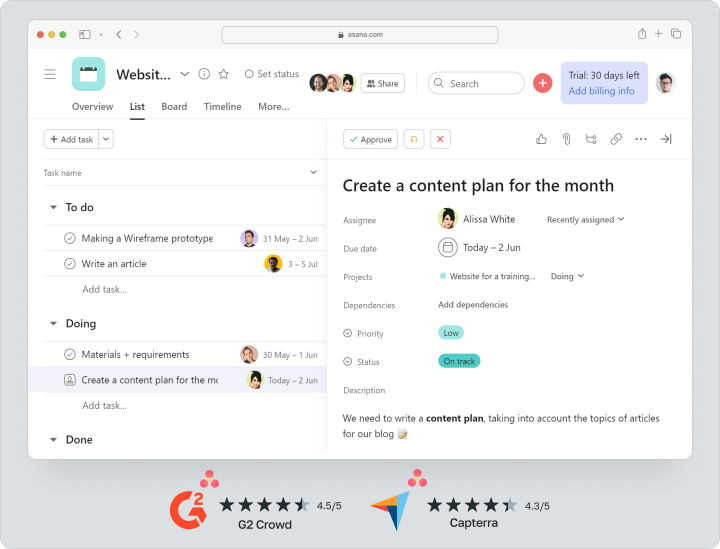
Microsoft To Do
This free alternative fits perfectly into Windows 11 and Outlook ecosystems. Lists sync through Microsoft 365, reminders surface in the calendar, and the clean UI recalls the classic Wunderlist. Missing pieces: Kanban, Gantt, and team reporting.
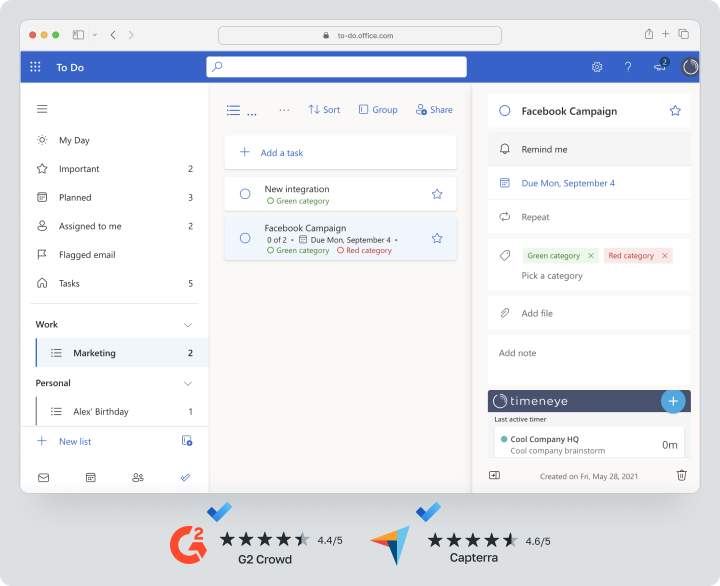
Trello
Trello remains the iconic Kanban board for visual planning. With Automation (formerly Butler), the board got smarter: you can auto-assign members and due dates. Still, robust reporting, time tracking, and access rights are absent unless you pay for add-ons — the very pain points people cite in Todoist.
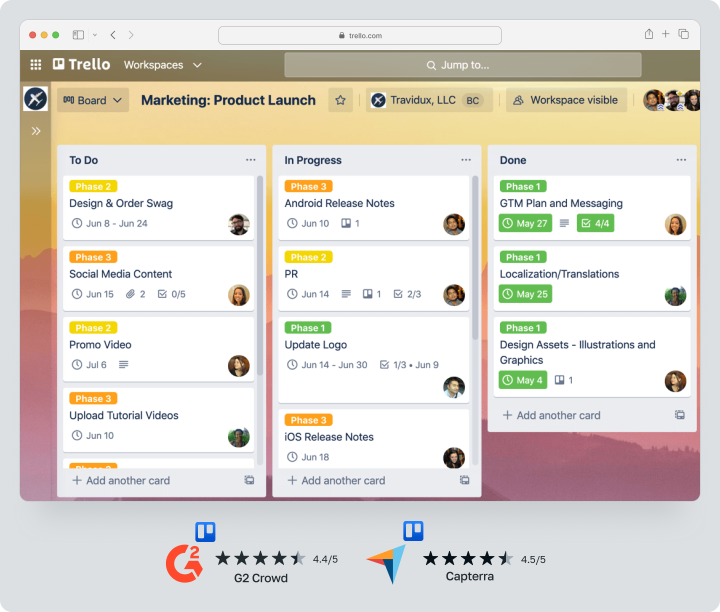
Notion
Notion merges tasks, documentation, and databases: tables, wikis, and Kanban boards coexist in one workspace. Power users love the flexibility, but newcomers need time to shape a fully-fledged task manager.
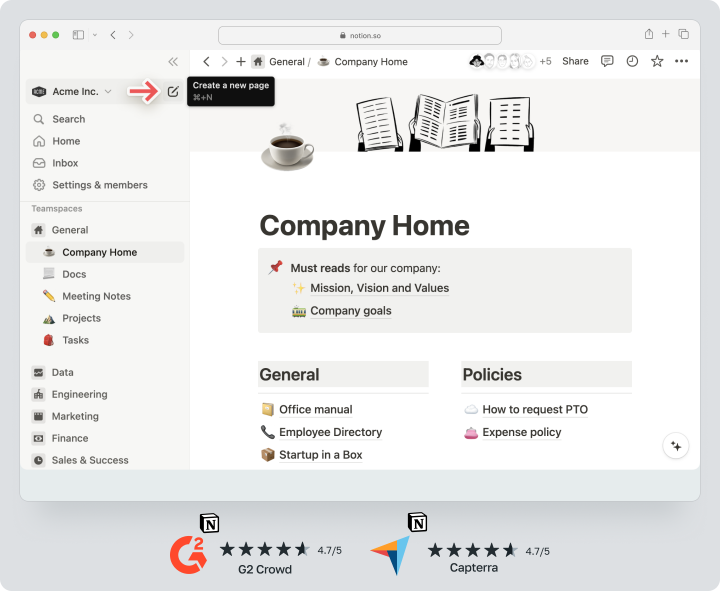
Things (macOS/iOS)
Things is the epitome of elegance in the GTD world. The warm colour palette, “Today,” “Plan,” and recurring tasks create a relaxed experience on Mac and iPhone. Obvious downside: no Windows or Android version, and collaboration is limited to family use.
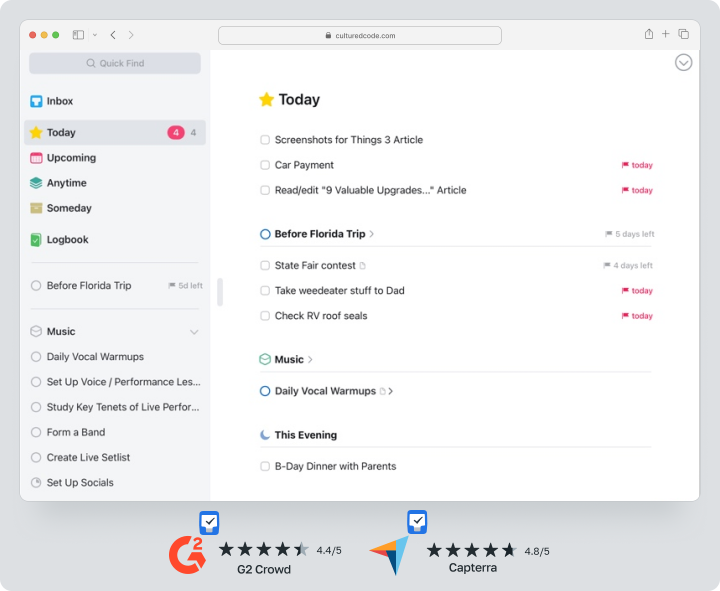
TickTick
TickTick is often called “Todoist on steroids.” It inherited the quick task-creation form but added a Pomodoro timer, calendar, habit tracker, and nuanced priority system. There’s even an embeddable calendar widget for Chrome and Edge. For teams, though, roles and detailed permissions remain scarce.
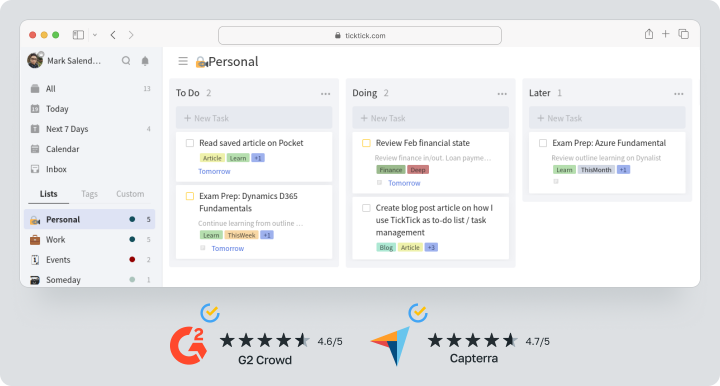
Any.do
Any.do doubles down on minimalism and mobility. Voice tasks via Siri and Google Assistant, the signature “Sunday Planning,” and seamless calendar integration turn it into a superb everyday helper. For serious projects, however, it lacks Kanban, analytics, and an API.
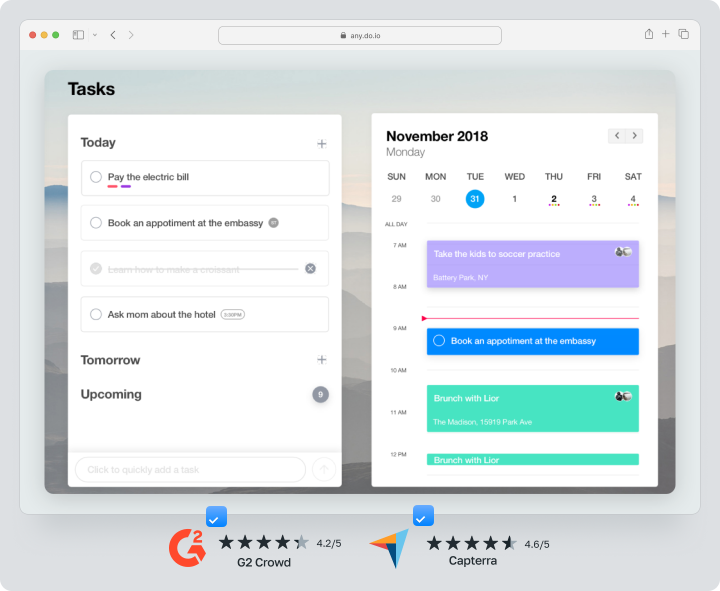
Quire
Quire combines a tree-structured outline with Kanban boards: large projects break into levels, then move across columns. The service is free for up to ten people, but time tracking and advanced reports cost extra, so businesses often find a solution like Worksection more economical in the long run.
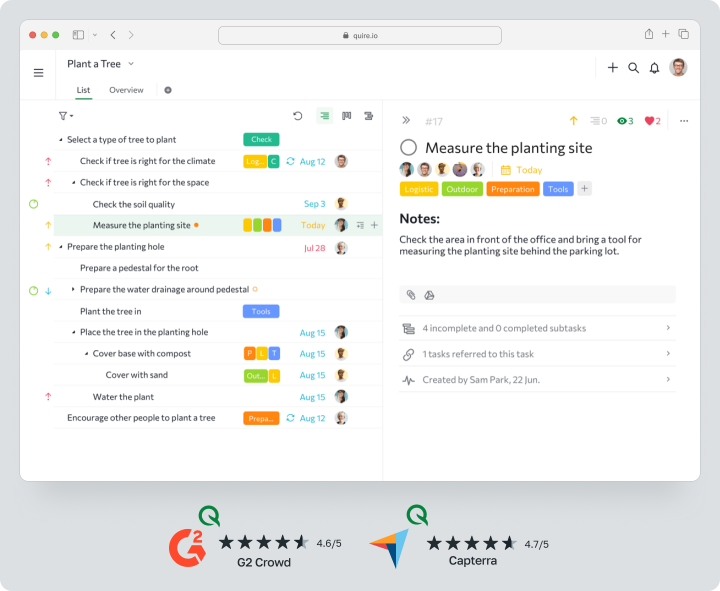
Comparative Table of the Best Todoist Alternatives
| Tool | Key Features | Built-in Time Tracker | Access Model | Starting Price (2025) | Best For |
| Worksection | Kanban, Gantt, calendar, reports, API | Yes | Granular | from $49 per team | SMBs, agencies |
| ClickUp | Docs, goals, automations, mind maps | Yes | Advanced | from $7 per user | Hybrid teams, product IT |
| Asana | Projects, portfolios, automation, reporting | No | Advanced | from $10.99 per user | Marketing, development |
| Microsoft To Do | Lists, reminders, Outlook integration | No | Basic | Free | Personal tasks, micro-teams |
| Trello | Kanban, automation, Power-Ups | Via plug-ins | Basic | $6 per user | Visual planning |
| Notion | Databases, pages, Kanban, wiki | No | Advanced | $8 per user | Start-ups, remote teams |
| Things | GTD, calendar, Siri integration | No | Personal | $49.99 one-off | Apple users |
| TickTick | Pomodoro, habits, calendar | Yes | Personal | $3.99 per user | Freelancers, students |
| Any.do | Voice tasks, calendar, reminders | No | Personal | $2.99 per user | Everyday errands |
| Quire | Task tree, Kanban, reports | Via add-on | Advanced | $8.50 per user | Project teams, creatives |
Which Platform Should You Choose in 2025?
If you want a simple replacement that keeps Todoist’s light touch, start with TickTick or Microsoft To Do. Both launch within minutes, and task import is nearly painless. Teams who rely on Trello-style Kanban but need stronger time tracking and permissions should consider Worksection or ClickUp. The difference: Worksection gives you all essential features in any plan, whereas ClickUp charges for each additional “power-up.”
Asana and Notion outshine Todoist when a business must merge tasks with wide-ranging workflows and knowledge bases. Expect, however, to spend a week to a month on training, migration, and setup. Things, Any.do, and Microsoft To Do make excellent personal planners, yet complex project management will require extra tools.
In short, the choice hinges on scale:
- Personal productivity — Microsoft To Do, Things, or Any.do.
- Cross-functional teams up to 100 people — Worksection, with no plug-in purchases and built-in reports.
- Product-driven companies with an automation department — ClickUp or Notion, provided you can invest in scripting and maintenance.
Frequently Asked Questions (FAQ)
Which Todoist alternative is best for business use?
For small and medium-sized businesses, Worksection is the optimal pick in 2025. The service unites Kanban boards, Gantt charts, an integrated time tracker, and granular roles. Because every feature is available from the entry plan, companies avoid paying for the stack of integrations and modules often required in Asana or Trello.
Are there free Todoist alternatives that support team collaboration?
Yes. Microsoft To Do and Trello’s free tier both allow collaboration at no charge. You will, however, face limitations: no reports, time tracking, or advanced automation. If you need a broader feature set while keeping costs down, try Worksection’s free two-week trial — enough time to import projects, test reports, and invite clients.
How is Worksection different from Todoist?
Todoist targets individual task lists and light collaboration, whereas Worksection was built for project teams from the outset. The distinction breaks down into three areas:
- Visualisation. Worksection offers Kanban, Gantt, and calendar; Todoist has lists only.
- Time tracking. Worksection includes a native tracker and financial reports, solving billing needs.
- Access rights. Worksection lets you hide internal comments and budgets from clients, flexibility Todoist lacks.
Conclusion
Your choice of platform always depends on what you need to accomplish today and where you aim tomorrow. If you want a lightweight personal planner, Things or Microsoft To Do will do; if you need a flexible knowledge-base constructor, look to Notion; and for advanced process automation, many teams lean toward ClickUp or Asana. Yet when it comes to full-scale team time tracking, detailed project management, and transparent reporting without hidden fees, Worksection remains the most balanced and cost-effective alternative to Todoist — bringing every critical tool under one roof, simplifying client collaboration, and helping teams of any size work smoothly and predictably.